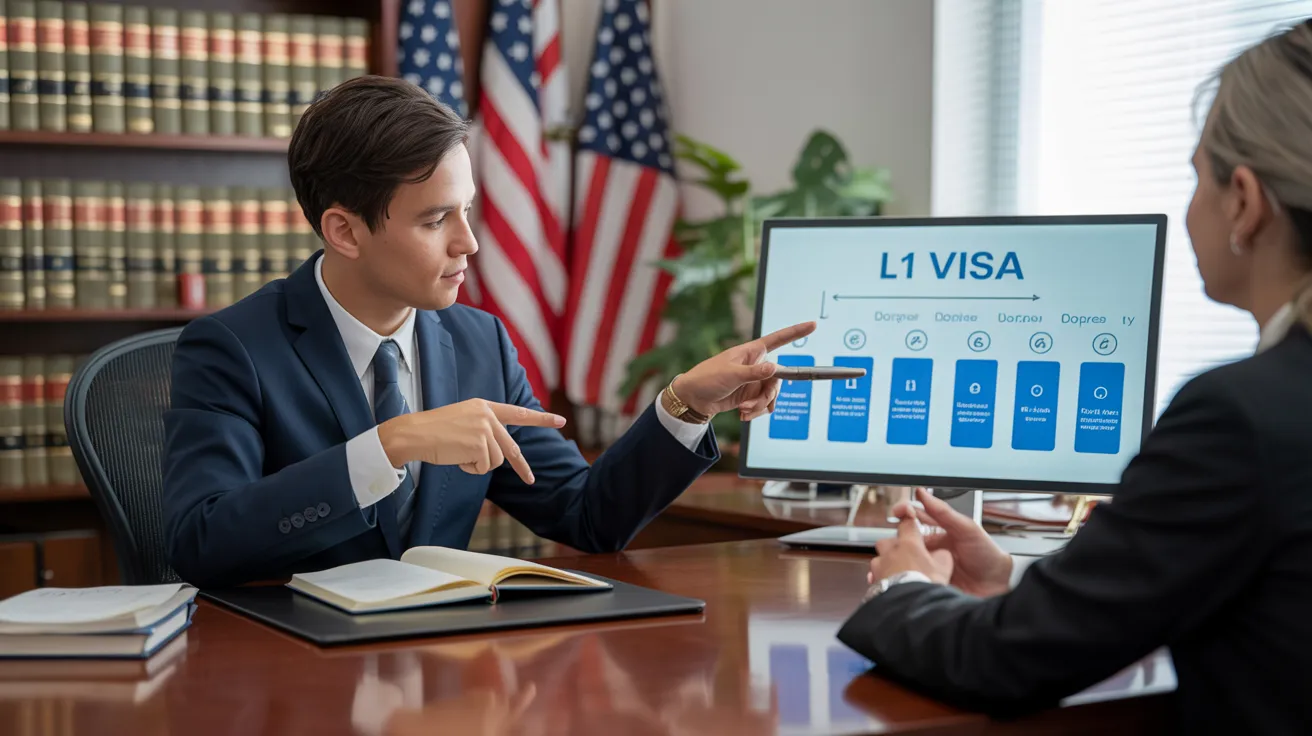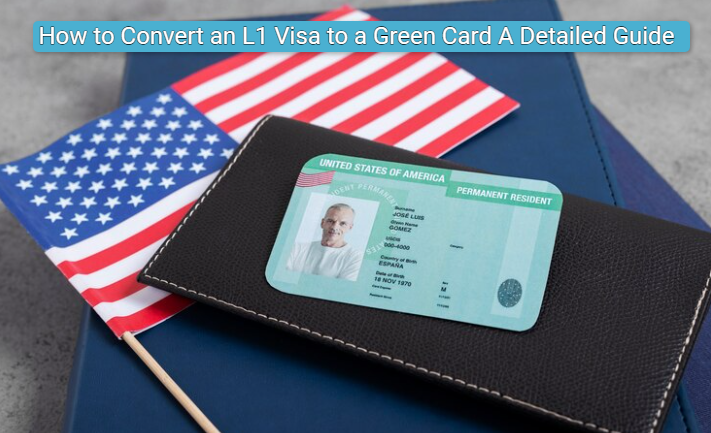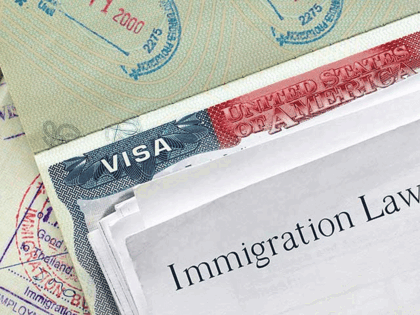Opening Opportunities: A Comprehensive Guide to the L1 Visa Process
The L1 visa procedure presents a crucial path for international firms looking for to move crucial workers across boundaries. Recognizing the nuances of qualification criteria, the distinctions in between L-1A and L-1B visas, and the ins and outs of the application procedure can substantially affect a candidate's success. Nevertheless, steering this complex landscape is not without its challenges, and mindful interest to documents and employer sponsorship is essential. As we explore the crucial components of this procedure, the techniques for getting over prospective challenges will certainly come to be noticeable, revealing exactly how educated preparation can open a world of chances.
Comprehending the L1 Visa
Recognizing the L1 visa requires recognizing its significance as a crucial device for international business seeking to transfer knowledgeable staff members between worldwide workplaces. This non-immigrant visa category facilitates the movement of executives, managers, and specialized understanding workers to the United States, consequently enabling organizations to maintain functional continuity and harness international ability effectively. The L1 visa is divided right into 2 main categories: L-1A for managers and executives, and L-1B for workers possessing specialized knowledge.The L1 visa serves a critical duty in improving a company's competitive side in the international marketplace. By allowing firms to relocate their key personnel, companies can assure that important jobs are managed by certified people who are currently acquainted with the firm's society and functional processes. L1 Visa. This internal transfer mechanism not only fosters knowledge sharing yet additionally advertises technology and collaboration throughout borders.Moreover, the L1 visa is often preferred for its fairly simple application procedure contrasted to various other visa groups, as it permits double intent, allowing owners to seek permanent residency while on a momentary copyright. This function makes the L1 visa especially appealing for both employers and employees, as it streamlines the path for experienced experts to develop lasting residency in the USA
Eligibility Criteria
Qualification for the L1 visa depends upon several crucial standards that guarantee both the employee and the employer fulfill specific credentials. This non-immigrant visa is created for international companies to move workers from consular services to united state counterparts.Firstly, the employer should be a certifying company, that includes a moms and dad company, branch, associate, or subsidiary of a united state company. The company should have been doing company for at the very least one year both in the united state and abroad. This ensures that the business has adequate operational security and a genuine presence.Secondly, the worker should hold a supervisory, exec, or specialized understanding placement. For L1A visas, the applicant should demonstrate supervisory or executive qualifications, while L1B visas concentrate on specialized understanding relevant to the company's products, solutions, or procedures. Furthermore, the staff member should have benefited the international entity for at least one continual year within the last 3 years prior to their application.Lastly, the staff member's duty in the U.S. should line up with their previous setting, ensuring that their skills and proficiency are leveraged for the company's benefit.

Kinds Of L1 Visas
The L1 visa category makes up two primary types designed to facilitate the transfer of employees within international firms: the L1A visa for managers and executives, and the L1B visa for employees with specialized understanding. Each type serves unique objectives and has details eligibility criteria.The L1A visa is tailored for people who hold supervisory or executive positions within a firm. This visa allows top-level staff members to transfer to an U.S. branch, subsidiary, or associate of the same organization. Candidates for the L1A visa need to demonstrate that they have actually been employed in a supervisory or executive capability for a minimum of one constant year within the past 3 years prior to their application. Furthermore, this visa offers a much longer duration of stay, originally provided for 3 years, with the possibility of extensions for approximately seven years.In comparison, the L1B visa is planned for professionals with specialized expertise pertaining to the business's products, services, or procedures. To certify, candidates need to show that their knowledge is crucial to the organization which they have actually functioned for at the very least one constant year within the last three years in a role that required this specialized expertise. The L1B visa is originally approved for 3 years, with expansions readily available for as much as 5 years.Both visa kinds are important for business looking for to improve their global procedures by leveraging skilled employees, thus promoting advancement and efficiency within the united state market.
Application Process
Steering with the L1 copyright process entails numerous important steps that must be meticulously followed to ensure a successful end result. The process begins with the united state company, who should first develop eligibility by showing a qualifying relationship with the international entity and validating that the staff member meets the details demands for the L1 visa category being sought.Once eligibility is verified, the employer launches the procedure by submitting Type I-129, the Application for a Nonimmigrant Worker, with the U.S. Citizenship and Immigration Services (USCIS) This kind needs to be gone along with by an in-depth description of the job obligations to be carried out, the business framework of both the U.S. and foreign entities, and the worker's credentials. It's vital to confirm that all details is precise and full, as omissions or inaccuracies can bring about delays or denials.Upon authorization of the I-129 application, the following action entails the employee using for the L1 visa at a united state embassy or consulate in their home country. This stage needs the completion of Type DS-160, the Online Nonimmigrant copyright, and scheduling a meeting. Throughout the interview, the applicant has to provide evidence sustaining their credentials and the employer's petition.After the visa is granted, the worker can get in the United States to operate in the assigned role. Generally, careful prep work and adherence to each action of the application process are necessary for a successful L1 visa result.
Needed Documentation

Necessary Kinds Needed
Navigating the L1 Visa process calls for careful focus to the crucial forms and documents needed for a successful application. The key type needed is the Kind I-129, Application for a Nonimmigrant Employee, which must be completed and submitted by the united state employer (L1 Visa Requirements). This kind details the information of the work offer and the qualifications of the staff member seeking the L1 Visa.Alongside Form I-129, the candidate will certainly require to full Form I-539 if going along with relative are also getting visas. Additionally, the employer has to supply proof of the certifying relationship between the U.S. entity and the international entity, frequently demanding the submission of company files such as posts of consolidation or economic statements.Moreover, it is important to include the L Classification Supplement to Type I-129, which specifies the kind of L Visa being asked for-- either L-1A for supervisors and executives or L-1B for staff members with specialized knowledge. Ultimately, candidates need to assure that all kinds are authorized and dated properly, as insufficient entries can lead to hold-ups or rejections. Effectively constructing these vital types lays the structure for a smoother L1 copyright process
Supporting Evidence Demands
Sustaining documentation is vital for an effective L1 copyright, as it validates the cases made in the application. Candidates have to provide a series of records to show eligibility for the visa, which is categorized right into 2 key kinds: evidence of the certifying partnership between the U.S. and international entities and proof of the candidate's qualifications.To develop the partnership, applicants must submit paperwork such as corporate business charts, economic statements, and evidence of possession. These records validate that the international business has a certifying connection with the U.S. company, whether as a parent firm, subsidiary, branch, or affiliate.For the applicant's qualifications, vital documents consist of a comprehensive employment letter from the foreign employer, detailing the applicant's work title, tasks, and period of employment. Furthermore, educational credentials, such as degrees and diplomas, ought to be given to confirm the candidate's expertise in the appropriate field.
Company Sponsorship Papers
Employer sponsorship documents play a necessary duty in the L1 copyright process, as they validate the U.S. company's commitment to the applicant's employment in the United States. These records are important for demonstrating the employer's qualification to sponsor the candidate for the L1 Visa.Key papers typically required include a comprehensive employment letter from the united state employer, which details the job title, duties, and the nature of the work partnership. In addition, the company needs to provide proof of the firm's authenticity, such as organization licenses, income tax return, and business charts, illustrating the connection in between the U.S. entity and the foreign company.Furthermore, proof of the employee's certifying partnership with the international business is required. This may consist of paperwork confirming the staff member's duty in the international entity, such as pay stubs, employment agreements, or efficiency assessments.
Typical Challenges
Maneuvering the L1 visa process provides a number of usual challenges that candidates must know (L1 Visa). Trick problems often include stringent documentation demands, prospective delays in processing times, and the requirement for strict legal compliance. Recognizing these barriers can aid applicants better prepare and minimize risks during their copyright journey
Documentation Demands
The L1 copyright process typically offers considerable challenges connected to documents requirements. Applicants have to give considerable paperwork to develop qualification, which can result in confusion and potential hold-ups. Key documents consist of proof of a qualifying partnership in between the U.S. and foreign employer, proof of the candidate's work background, and thorough info regarding the job duty in the U.S.One common difficulty is gathering enough proof to demonstrate the nature of the certifying relationship. Firms typically struggle to present clear organizational graphes or economic declarations that illustrate the connection between the entities. On top of that, making certain that letters of support from companies accurately reflect the candidate's job responsibilities and certifications is necessary, as vague summaries can cause denials.Another issue develops from the need for in-depth job summaries that line up with the L1 visa groups. Candidates need to verbalize not just their present role but likewise their managerial or specialized understanding duties plainly. This requires a thorough understanding of both the applicant's placement and the regulatory language utilized in L1 applications.
Processing Dead Time
Experiencing delays in handling times is a typical difficulty encountered by L1 visa applicants, typically causing disappointment and unpredictability. Several aspects add to these hold-ups, consisting of high application volumes, boosted scrutiny of applications, and administrative stockpiles within the united state Citizenship and Immigration Provider (USCIS) Applicants may locate that processing times can vary significantly depending on the solution facility handling their application, as each center has its very own workload and effectiveness levels. Additionally, the complexity of the candidate's situation, such as the need for comprehensive documents or explanation, can additionally expand wait times.In some instances, issues associated with the candidate's existing immigration condition or previous visa history might likewise cause additional hold-ups, as USCIS might require additional testimonial or details. It is vital for candidates to continue to be positive during this period, keeping open interaction with their employers and legal representatives to resolve any type of prospective problems promptly.Understanding these processing time difficulties can assist L1 visa candidates plan for feasible hold-ups and minimize the effect on their shift and occupation plans. Perseverance and persistance are important virtues in maneuvering this intricate process.
Lawful Compliance Issues
Lots of L1 visa candidates run into legal conformity concerns that can complicate their journey toward obtaining the visa. Understanding and sticking to the details laws set by the united state Citizenship and Immigration Services (USCIS) is vital. Typical challenges consist of demonstrating the certifying partnership in between the foreign and united state employers, in addition to showing that the applicant possesses the requisite specialized understanding or supervisory capacity.Additionally, candidates should supply complete documentation detailing their job obligations, corporate structure, and financial viability of the united state entity. Inadequate or imprecise documents can cause delays and even denials. Companies have to additionally assure that they abide by labor legislations, consisting of wage and functioning condition standards, which can influence visa eligibility.Another usual issue includes maintaining compliance with the terms of the visa once granted. Changes in work condition, work obligations, or company framework can require changes to the visa, which if not addressed quickly can lead to legal difficulties. Consequently, staying notified about compliance demands and seeking legal counsel when needed is important to browse the intricacies of the L1 visa process effectively.
Tips for Success
Success in the L1 copyright procedure often hinges on meticulous preparation and interest to detail. To boost your opportunities of approval, start by thoroughly comprehending the qualification needs for both the L1A and L1B visa categories. Evaluate whether your position at the business certifies as managerial, executive, or specialized understanding, as this classification especially influences your application.Next, gather comprehensive paperwork that substantiates your claims. This consists of business charts, detailed work descriptions, and proof of the company's functional structure. Clear and concise proof of the certifying connection between the united state entity and the international entity is crucial. Validate that all records are organized logically and offered in an expert way, as this shows your commitment and severity regarding the application.Engage the services of an experienced immigration attorney who concentrates on L1 visas. Their know-how can verify vital, directing you with complex policies and ensuring that all documents abides by current regulations. In addition, plan for the interview by exercising responses to usual inquiries and preparing to review your role and contributions to the company extensive.
Often Asked Questions
Can Household Members Come With the L1 Visa Holder?
Yes, relative of L1 visa holders, consisting of spouses and unmarried children under 21, can go along with the key visa holder. They may additionally look for L2 visas, which allow them to reside in the United States.
How Long Can I Remain On an L1 Visa?
The L1 visa allows preliminary remains of approximately three years, with the possibility of extension. L1A visa owners might stay for a maximum of seven years, while L1B visa owners can continue to be for five years.
Can L1 Visa Owners Get a Permit?
Yes, L1 visa holders can look for an environment-friendly card. They may go after long-term residency with employment-based groups, usually requiring sponsorship from their employer, supplied they satisfy the required certifications and documents demands.
What Happens if My L1 copyright Is Refuted?
If your L1 copyright is rejected, you might get a notification describing the factors for denial. You can look for to appeal the decision, reapply, or explore alternative visa choices based on your scenarios.
Exist Any Traveling Limitations With an L1 Visa?
An L1 visa usually L1 Visa guide enables for global travel; however, re-entry to the U.S. L1 Visa. is contingent upon preserving legitimate condition. Travelers ought to guarantee compliance with visa problems to avoid issues upon return
Conclusion

Comments on “L1 Visa Explained”